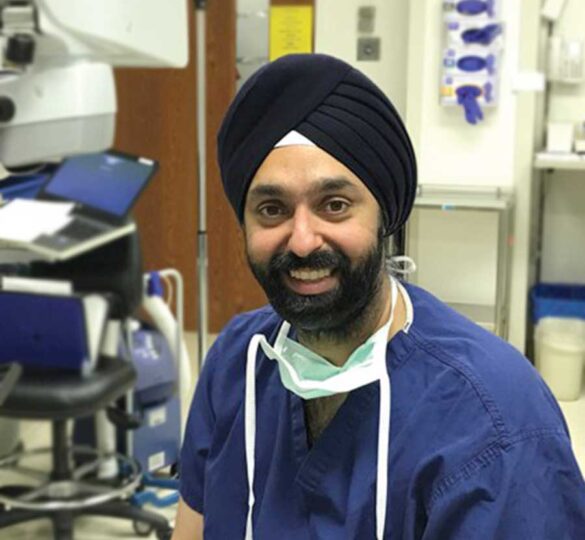Exploring Treatment Options for Glaucoma: Medications, Laser Treatments, and Surgeries
Based on a number of factors, your glaucoma doctor will recommend the right treatment for you. This article discusses some of those treatment options.

Glaucoma is a chronic disease that worsens over time. As it worsens, the optic nerve at back of eye can becomes damaged, impairing vision.
The biggest cause of this damage is high pressure inside the eye. There is no perfect pressure for all patients. If you have glaucoma, your doctor will tell you the best pressure for your eyes. This is often referred to as your “target pressure” because it is the number that you and your doctor aim to reach with treatment.
Based on a number of factors, your doctor will recommend the right treatment for you. Here are some of those treatment options:
Medications – People with mild to moderate glaucoma usually start treatment with once-a-day prescription eye drops. There are many safe, effective options, and most side effects are temporary, such as redness or irritation after using the drops.
The most common drops are a class called prostaglandins, which are safe and effective in getting pressure down. Some examples are Xalatan (latanoprost), Lumigan (bimatoprost), Travatan Z (Travoprost) and Zioptan (tafluprost). Other types of glaucoma medications include alpha agonists and carbonic anhydrase inhibitors.
About half of people with glaucoma need to take two different eye drops to reach their target pressure. Some patients can take one drop that combines multiple drugs, such as Cosopt (timolol and dorzolamide), Combigan (timolol and brimonidine) or Simbrinza (brinzolamide and brimonidine).
Laser treatment – Two laser treatments called selective laser trabeculoplasty (SLT) and argon laser trabeculoplasty (ALT) are common low-risk options for people who have a hard time taking drops for any reason. SLT and ALT both help open up the eyes’ natural drainage system, which reduces the pressure. Laser treatment can last a few years or longer, and it can be repeated if needed. Doctors perform SLT and ALT in the office in a few minutes, with no cutting or stitches. People return to normal activities immediately.
MIGS surgeries – MIGS stands for minimally invasive or micro-invasive glaucoma surgery. In MIGS surgery, a tiny device is implanted in the eye to allow it to drain more easily, reducing internal pressure. These low-risk procedures are generally quick, causing no major disruption to the eye tissue and requiring minimal post-op recovery.
Because MIGS surgery is safer and has lower risks than traditional glaucoma surgery, doctors are recommending it earlier in the disease to reduce the burden of taking drops for life. Doctors pick the right device depending on what a patient needs. For example, for patients who also have cataracts, some devices are designed to be implanted during cataract surgery (iStent). Other devices can be used alone (Xen Gel Stent). Having MIGS surgery does not rule out other procedures or another MIGS surgery in the future.
Traditional glaucoma surgeries – Two traditional glaucoma surgeries called trabeculectomy and tube shunt are mostly recommended for people with advanced glaucoma, who have lower target pressures. These surgeries are safe and effective, but they are more involved than MIGS and have greater risk of complications. A doctor will weigh the risks and rewards to determine if these procedures are the best choice to lower pressure in advanced cases.
In trabeculectomy, a surgeon makes a small incision in eye to create a new way for fluid to leave, lowering pressure. For tube shunt surgery, a surgeon implants a tube that drains fluid out of the eye. Both procedures require stitches and a recovery period, but most patients with advanced glaucoma who have these surgeries benefit from them.
Follow-up Visits with your Doctor
Even after treatment, glaucoma does not go away. People with glaucoma generally do not see or feel any symptoms until the disease has done permanent damage, so it is important to go to all follow-up visits with the doctor. You and your doctor can make sure you reach and maintain your target pressure to keep glaucoma under control and preserve your vision.
Article by Inder Paul Singh, MD.
First posted on March 17, 2017; Last reviewed on May 12, 2022.

Inder Paul Singh, MD
Dr. Inder Paul Singh is the President of The Eye Centers of Racine & Kenosha, Ltd. in Wisconsin. He completed his fellowship in Glaucoma at Duke University. He is a clinical researcher who publishes his papers in ophthalmology journals and presents his research at national and international meetings.